
If you think all adventures happen above ground, think again. Some of the most incredible wonders of our world are hidden deep beneath the surface, waiting to be explored. From glittering stalactites and massive underground chambers to mysterious cave paintings and ancient sculptures, caves are nature’s way of showing off in secret.
These subterranean marvels have captivated adventurers, explorers, and historians alike for centuries, offering a chance to witness nature’s raw power and human ingenuity in one place. Whether you’re spelunking through an ancient cavern or admiring intricate cave art, there’s no shortage of awe-inspiring experiences awaiting below the earth’s surface. These nine caves are truly bucket-list material!
Ready to go underground? Let’s dive into the depths!
1. Carlsbad Caverns (New Mexico, USA)
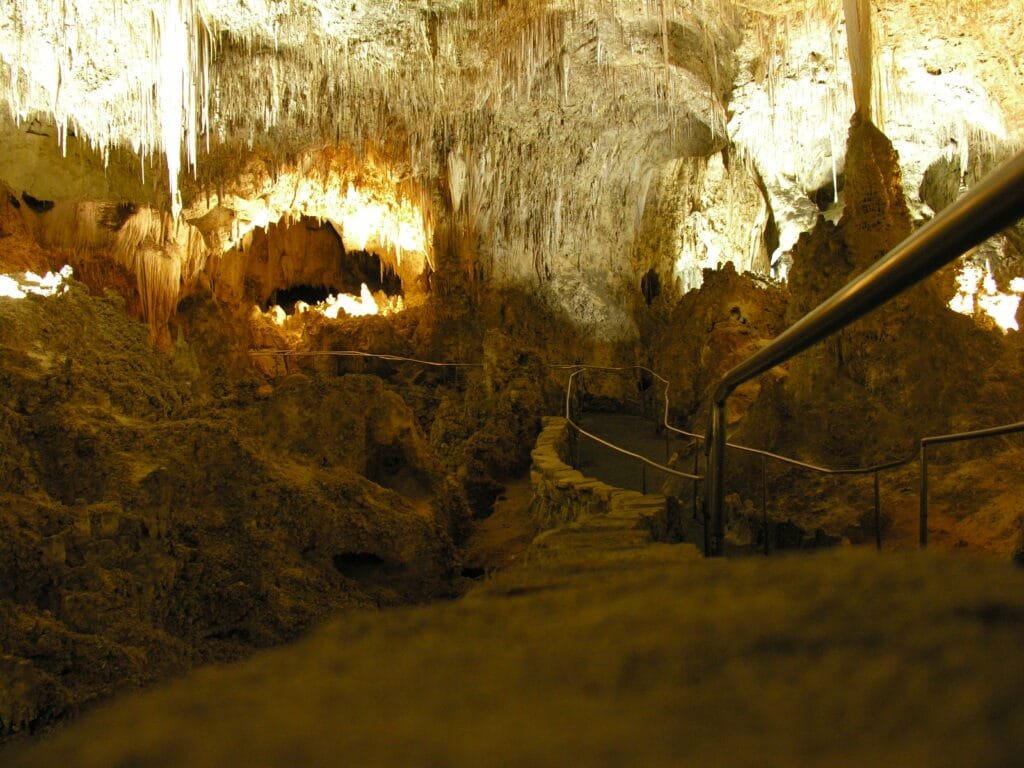
When you hear “cave,” you probably picture something damp, dark, and a bit claustrophobic. Carlsbad Caverns smashes that stereotype. This underground marvel in New Mexico features over 119 caves, with the Big Room being the crown jewel. Imagine walking into a natural limestone chamber so large you could fit six football fields inside. Incredible, right?
You’ll find chandeliers of stalactites hanging from the ceiling, giving the whole place a cathedral-like vibe. The park also offers bat flight programs at dusk, where thousands of bats take off into the sky in synchronized swirls. It’s both eerie and mesmerizing. There are also many night sky programs available to stare at the stars and go on low-light hikes. If you’re feeling adventurous, try the ranger-led spelunking tours—just prepare to get a little muddy.
2. Waitomo Glowworm Caves (North Island, New Zealand)
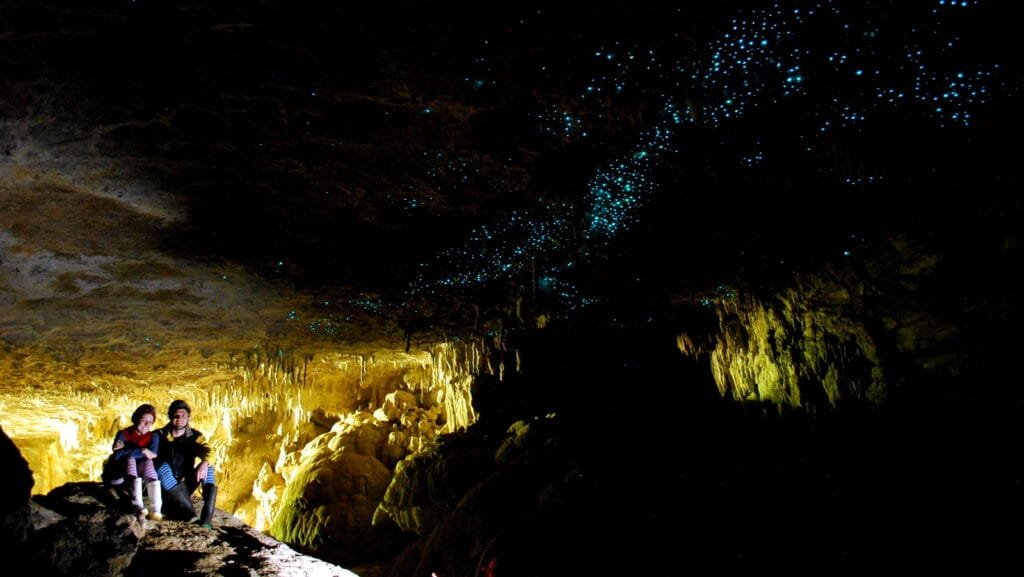
Waitomo Glowworm Caves are straight out of a fantasy novel and is also one of New Zealand’s best natural attractions. Nestled in New Zealand’s lush North Island, this cave system is famous for its glowworms—tiny creatures that emit a magical blue-green light.
Hop onto a guided boat tour and glide silently through the caves as thousands of glowworms light up the ceiling, creating a starry sky underground. It’s serene, a bit surreal, and one of those experiences that will make you stop and say, “Wow, nature’s amazing.” Plus, if you are up for a challenge, blackwater rafting through the darker parts of the cave is an adrenaline-pumping adventure you won’t forget.
While you are in the Waitomo region, grab the chance to explore Ruakuri Caves – largest cave in the Waitomo area, discovered between 400 and 500 years ago, and Aranui Caves – home to spectacular pale brown, pink and white stalactites and stalagmites. Both caves are just as magical.
3. Postojna Cave (Postojna, Slovenia)

Want to feel like royalty while exploring caves? Postojna Cave delivers. Located in Slovenia, this cave is so enormous that part of the tour is done by train. It is a breathtaking natural marvel.
You’ll ride through jaw-dropping passages filled with massive stalagmites and stalactites. The cave is home to the olm, a rare, pale salamander also known as the “human fish” because of its skin color but legend has it that they are actually baby dragons! If you visit during the holidays, you’ll find a Christmas nativity scene staged within the cave, complete with stunning lights and carolers. It’s like stepping into a magical underground kingdom.
4. Son Doong Cave (Quang Binh Province, Vietnam)
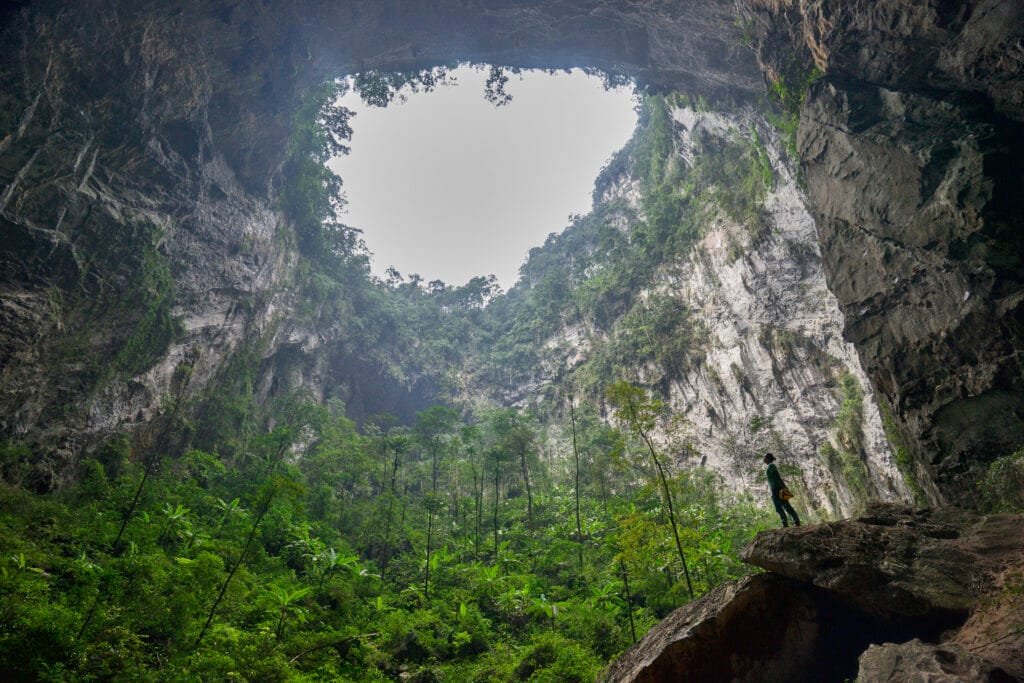
Son Doong Cave isn’t just a cave, it’s a world within itself. Located in the lush Phong Nha-Ke Bang National Park in Vietnam, this is considered to be the largest cave on the planet. Inside, you’ll find entire ecosystems, including forests, rivers, and even weather systems.
Access to Son Doong is limited and requires a guided tour (and a hefty price tag), but it’s worth every penny. You’ll rappel down walls, cross mysterious underground rivers that no one knows where it ends, and camp inside this surreal underworld. At certain points, natural skylights let sunlight pour in, illuminating the lush vegetation growing inside. This is not just a visit—it’s an expedition.
5. Reed Flute Cave (Guilin, China)
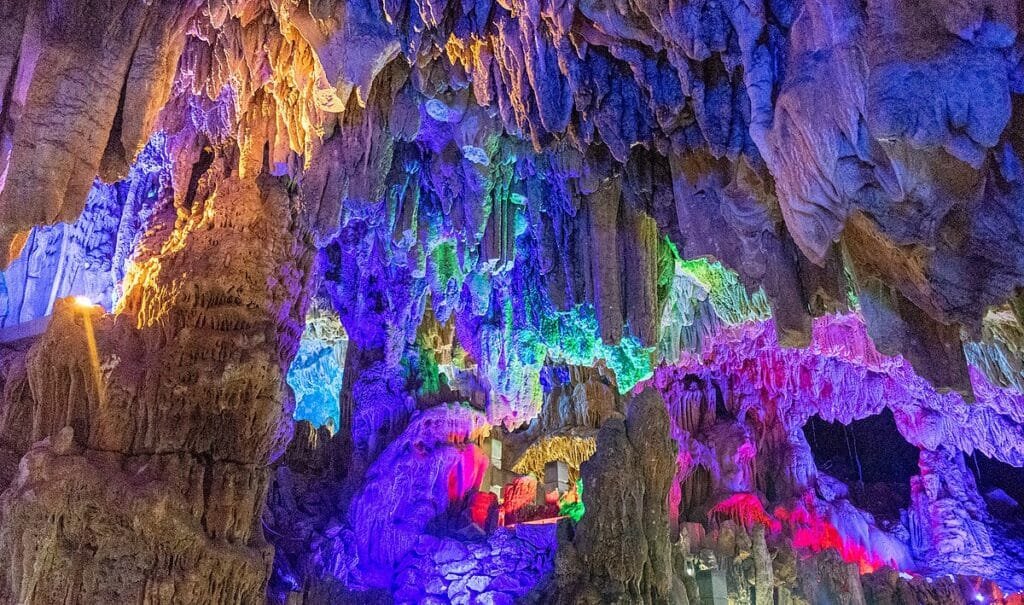
Sometimes nature needs a little help to shine, and that’s where Reed Flute Cave in Guilin steps in. This 180-million-year-old cave is a technicolor wonderland, thanks to strategically placed lights that enhance the natural beauty of its stalactites, stalagmites, and crystal-clear pools.
The cave gets its name from the reeds growing outside, which locals once used to make flutes. Inside, it feels like you’re walking through an alien planet, with vivid reds, blues, and greens illuminating the rock formations. Check out the Pines in the Snow- two unique stalagmites, Sky-Scraping Twin- magnificent tall twin pillars. Don’t miss the “Crystal Palace,” a chamber so beautifully lit it looks like it’s made of glass.
6. Skocjan Caves (Skocjan, Slovenia)

If you thought one Slovenian cave was enough, think again. Skocjan Caves, a UNESCO World Heritage Site, is like Postojna’s wilder, more dramatic cousin. The Škocjan Caves are among the world’s most remarkable, showcasing the most extraordinary underground wonders in Slovenia and the entire Karst region. Here, an underground river cuts through a massive canyon, creating an atmosphere that feels straight out of a fantasy epic.
As you cross the high bridges inside, you’ll hear the roar of the Reka River far below, and it’s both thrilling and humbling. This cave also has some of the largest chambers in Europe, making it an awe-inspiring adventure for visitors who love geology and grand landscapes.
7. Fingal’s Cave (Island of Staffa, Scotland)
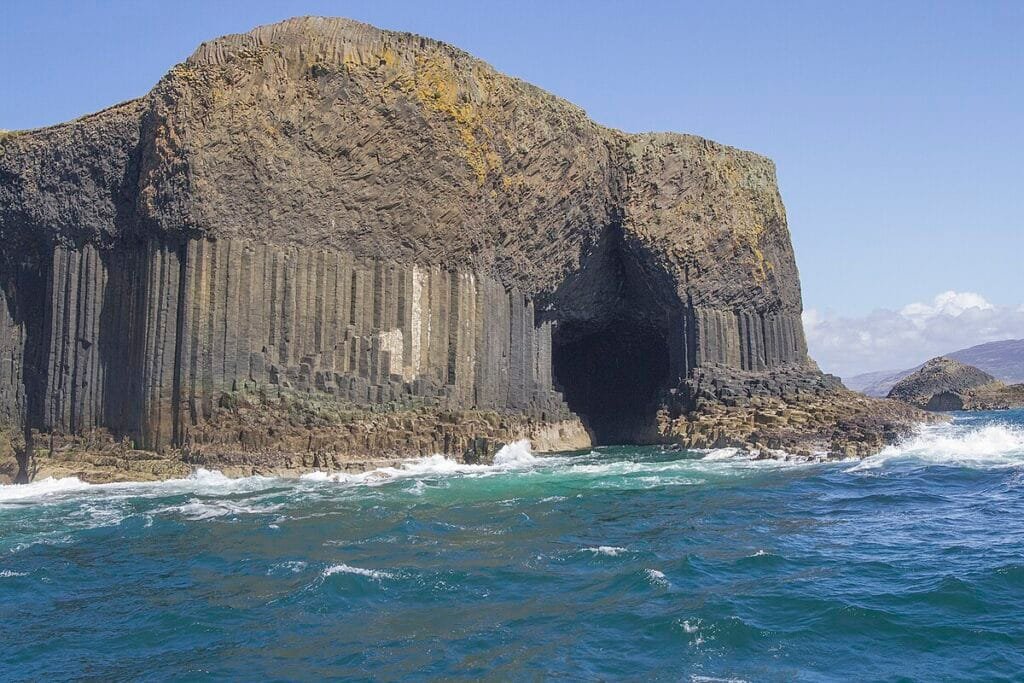
Fingal’s Cave, located on the uninhabited island of Staffa in Scotland, is a true natural masterpiece. Known for its striking hexagonal basalt columns, the cave’s unique shape and acoustics have inspired musicians and artists for centuries.
The cave’s interior creates an eerie, almost mystical atmosphere, especially when the waves crash against the rocks, amplifying the sound like a natural symphony. Accessible by boat, a visit to Fingal’s Cave is an otherworldly experience, offering both beauty and intrigue. The area surrounding Fingal’s Cave and the Isle of Staffa is teeming with diverse wildlife. You can spot seabirds like puffins, black-legged kittiwakes, and gulls, along with marine life such as sharks, dolphins, grey seals, and even minke and pilot whales. This combination of land and sea creatures makes Fingal’s Cave a vibrant haven for nature lovers and a must-see for any adventurer.
8. Jeita Grotto (Mount Lebanon, Lebanon)
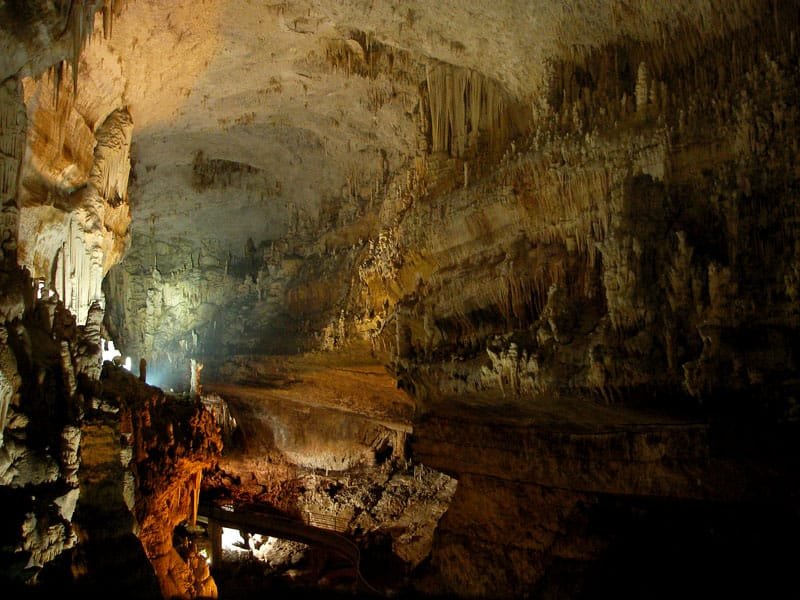
Located just 18 kilometers from Beirut, Jeita Grotto is Lebanon’s pride and joy. It is so stunning that it was one of top 14 finalists in the New 7 Wonders of Nature competition. This two-level cave system offers both boat and walking tours, taking you past glittering stalactites and stalagmites.
The lower cave is navigated by a serene boat ride, where the water reflects the rock formations like a natural mirror. The upper cave, meanwhile, is a photographer’s dream, with dramatic formations, including stunning stalagmites, stalactites, shimmering ponds, intricate mushroom-like shapes, towering columns, and delicate curtains and draperies. Visitors can explore three mesmerizing chambers within this natural wonder. Bonus: It’s an easy day trip from the bustling city of Beirut.
9. Ajanta Ellora Caves (Maharashtra, India)

The Ajanta and Ellora Caves, located in Maharashtra, India, are a UNESCO World Heritage site and a must-visit for history and art lovers. These ancient rock-cut cave complexes date back to the 2nd century BCE and are famous for their stunning murals, intricate sculptures, and Buddhist, Hindu, and Jain temples.
Ajanta Caves are known for their breathtaking wall paintings that depict scenes from the life of the Buddha, while Ellora showcases a larger variety of temples and monasteries carved from volcanic rock. Exploring these caves offers a glimpse into India’s rich cultural and spiritual heritage, making them a truly unforgettable experience.
Pro Tips for Cave Explorers:
- Dress appropriately: Comfortable shoes and breathable clothing are a must for most caves. Some may require sturdy boots for rough terrain.
- Follow the rules: Many caves are delicate ecosystems, so touching formations or disturbing wildlife is a big no-no.
- Bring a flashlight: Even guided tours can have dim spots where an extra light comes in handy.
- Pack a jacket: Even in the hottest climates, caves are usually chilly inside.
- Plan ahead: Some caves, like Son Doong, require months of planning and advance bookings.
It’s clear that the world beneath our feet holds as much, if not more, magic than the landscapes we see above. So, grab your headlamp, pack your curiosity, and take the plunge into the depths—because some of the best wonders of the world are just waiting to be discovered underground.
*Plan your adventure effortlessly—click the hyperlinks to book your trips today!









Leave a Reply